Just In
- 1 hr ago

- 8 hrs ago

- 9 hrs ago

- 12 hrs ago

Don't Miss
- Sports
 LSG vs CSK: 'Mahi Maar Raha Hain' - Twitter goes Crazy as MS Dhoni shows Batting Magic at Ekana Stadium
LSG vs CSK: 'Mahi Maar Raha Hain' - Twitter goes Crazy as MS Dhoni shows Batting Magic at Ekana Stadium - Movies
 When Karan Johar Revealed Sara Ali Khan And Janhvi Kapoor Once Dated Siblings On KWK 7, Guess Who?
When Karan Johar Revealed Sara Ali Khan And Janhvi Kapoor Once Dated Siblings On KWK 7, Guess Who? - Finance
 Reliance, ONGC, Tata, Adanis: Energy Stocks Didn't Get The Memo Of Bears, Up 12% In 30-Days; 10 Stocks To BUY
Reliance, ONGC, Tata, Adanis: Energy Stocks Didn't Get The Memo Of Bears, Up 12% In 30-Days; 10 Stocks To BUY - News
 Trust Of The Nation 2024: PM Modi Is Poised For A Resounding Victory, Shows Dailyhunt Survey
Trust Of The Nation 2024: PM Modi Is Poised For A Resounding Victory, Shows Dailyhunt Survey - Automobiles
 Suzuki Swift Hatchback Scores 4 Star Safety Rating At JNCAP – ADAS, New Engine & More
Suzuki Swift Hatchback Scores 4 Star Safety Rating At JNCAP – ADAS, New Engine & More - Education
 NLSIU Announces the Rajiv K. Luthra Foundation Grant
NLSIU Announces the Rajiv K. Luthra Foundation Grant - Technology
 Dell Introduces AI-Powered Laptops and Mobile Workstations for Enterprises in India
Dell Introduces AI-Powered Laptops and Mobile Workstations for Enterprises in India - Travel
 Journey From Delhi To Ooty: Top Transport Options And Attractions
Journey From Delhi To Ooty: Top Transport Options And Attractions
Brown Rice: Nutrition, Health Benefits And Recipes
Rice (Oryza sativa) is a starchy cereal grain that belongs to the Poaceae family. Rice is the most common staple food consumed by more than half of the world's population due to its versatility and availability [1]. Rice has a soft, chewy texture, it can mix with any flavour and seasoning, adds substance to meals such as soups, salads and casseroles, and compliments a variety of dishes.
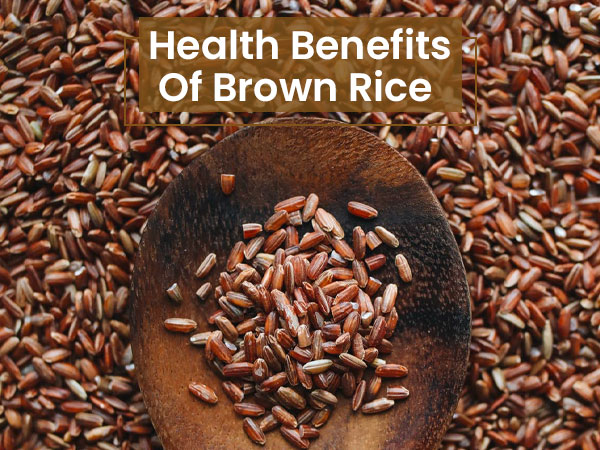
Rice comes in various shapes, sizes and colours. There are different varieties of rice. Here are some of the common varieties of rice:
• Brown rice - It is a type of whole grain rice which is high in nutrients than white rice.
• Basmati rice - It is a long-grain variety of rice that has a strong flavour and aroma.
• Jasmine rice - It is a long-grain variety of fragrant rice (also known as aromatic rice) that has a unique aroma and flavour.
• White rice - It is processed and polished rice that has its husk, bran and germ removed which changes the flavour, texture and appearance of the rice.
• Black rice - It is also called forbidden or purple rice which has a mild, nutty flavour and chewy texture.
• Red rice - Another variety of rice that has a red husk. Red rice has a nutty flavour and is usually consumed unhulled or partially hulled.
• Arborio rice - It is a short-grain rice commonly used in Italian cuisines.
• Glutinous rice - It is also called sticky rice because it becomes sticky when cooked. It is a short-grain rice variety commonly used in Asian dishes.

The most popular rice varieties are brown rice and white rice. However, brown rice is a whole grain food that has gained popularity due to its high nutrient value; it also provides an array of health benefits as compared to white rice. In this article, we'll talk about the nutrition aspects and health benefits of brown rice and brown rice recipes for weight loss.


What Is Brown Rice?
Brown rice is a whole grain that is unrefined and unpolished. This variety of rice is obtained by removing the hull (a hard protective covering) leaving the bran and germ intact which is packed full of nutrients [2] unlike white rice, which has its hull, bran and germ removed, resulting in the loss of nutrients.
Nutritional Value Of Brown Rice
100 g of brown rice contains 82 kcal energy and they also contain:
•
1.83
g
protein
•
0.65
g
total
lipid
(fat)
•
17.05
g
carbohydrates
•
1.1
g
fibre
•
0.16
g
sugar
•
2
mg
calcium
•
0.37
mg
iron
•
3
mg
sodium
•
0.17
g
fatty
acids,
total
saturated
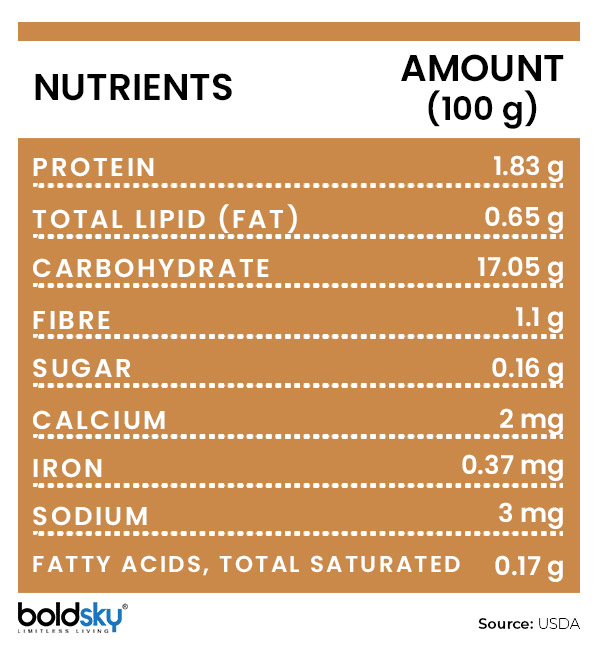
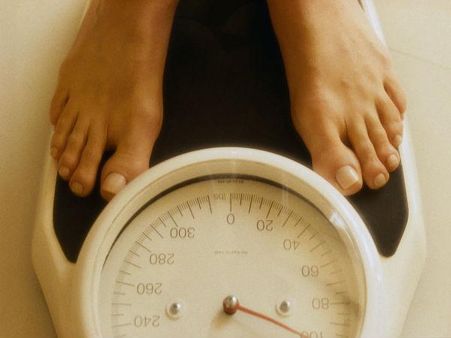
Health Benefits Of Brown Rice
1. Helps in weight loss
Brown rice contains a good amount of fibre. Consumption of dietary fibre helps keep your stomach full for a long period of time and prevents unwanted food cravings. This helps in losing weight because fibre is a natural appetite suppressant [3].
Studies have shown that women who ate more whole grains weighed less as compared to women who ate fewer whole grains [4].

2. Promotes heart health
Brown rice is high in fibre and plant compounds called lignans that can help decrease cholesterol levels and lower the risk of heart disease. A study has shown that consuming whole grains like brown rice improves cardiovascular and metabolic function [5]. Also, another study has shown that eating whole grains can decrease the risk of heart diseases [6].


3. Controls diabetes
Brown rice is a low glycemic index (GI) food, which can help prevent the risk of type 2 diabetes [7]. Glycemic index is a measure of how quickly or slowly the food is absorbed and how much they raise the blood sugar levels in the body. High GI foods are quickly digested and absorbed, causing a rise in blood sugar and low GI foods are absorbed slowly and won't raise your blood sugar levels.
A study compared the blood glucose lowering effects of brown rice and milled rice. The results showed that brown rice has high amounts of dietary fibre, phytic acid, polyphenols and oil which make it beneficial for diabetic patients than milled rice [8]

4. Prevents chronic diseases
Brown rice is an excellent source of antioxidants that can decrease the risk of a number of chronic health conditions such as coronary heart disease, cardiovascular disease, cancer, infectious diseases, respiratory diseases and diabetes [6].

5. Boosts digestive health
The fibre content in brown rice aids in regulating bowel movements. A study published in the Journal of Food Science showed the effects of brown rice and white rice during digestion. The study pointed out that the bran layer on brown rice improved digestion and helped in proper bowel movement [9].

6. Strengthens immunity
Brown rice is rich in essential vitamins, minerals and phenolic compounds that help strengthen your immune system and enhance its ability to fight infections.

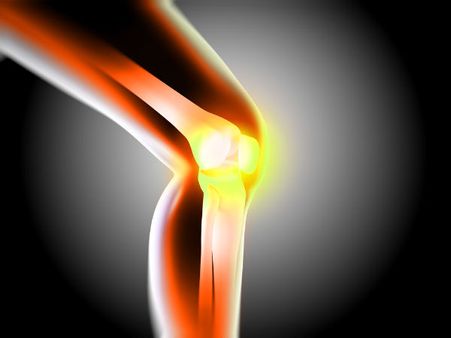
7. Maintains bone health
Brown rice contains a good amount of calcium, an essential mineral that is required to build strong and healthy bones and teeth. Calcium prevents the risk of osteoporosis and other bone diseases.

8. Supports nervous system functioning
Brown rice can aid in the proper functioning of the nervous system due to the presence of iron in it. Iron is an important mineral required for proper nerve function-it prevents diseases of the brain [10].

9. Good for lactating mothers
Studies have shown that lactating mothers who consumed germinated brown rice had lower depression, anger and fatigue, resulting in the reduction in total mood disturbances. In addition, eating brown rice also boosted immunity among lactating mothers [11].

10. May manage cancer
Studies have shown that brown rice extracts with high concentrations of gamma-aminobutyric acid (GABA) can stop the growth of leukaemia cancer cells and trigger cancer cell death [12]. Another study showed that the presence of phenols in brown rice has the potent ability to stop the growth of breast and colon cancer cells in humans [13].

11. Prevents neurodegenerative diseases
The presence of gamma-aminobutyric acid (GABA) in germinated brown rice has been shown to have neuroprotective effects against neurodegenerative diseases such as Alzheimer's disease and Parkinson's disease [14].
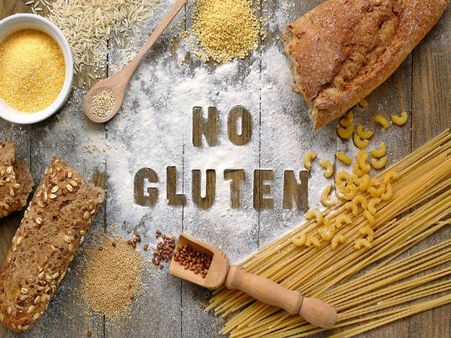
12. Free of gluten
Brown rice is free of gluten, which makes it a perfect food for gluten-sensitive people. People suffering from celiac disease can't eat foods containing gluten like wheat, barley or rye-based foods as gluten triggers an immune response that damages the small intestine [15].
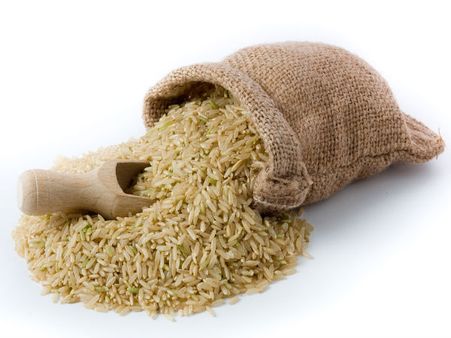
Side Effects Of Brown Rice
Arsenic is naturally present in the soil and foods such as rice, vegetables and other grains contain arsenic. Brown rice contains 80 per cent of inorganic arsenic because it has a germ layer, which retains a considerable amount of inorganic arsenic [16]. So, it is advisable to eat brown rice in lesser quantities.
How Much Brown Rice Should I Eat A Day?
Healthy adults should eat ½ cup to 1 cup of brown rice per day.
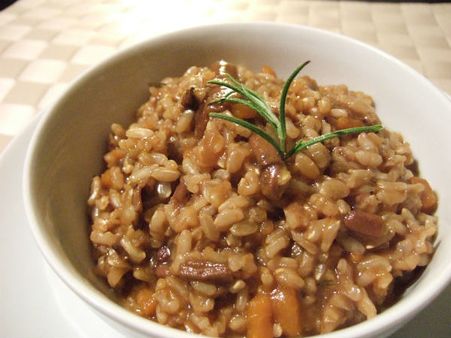
Ways To Add Brown Rice To Your Diet
•
Prepare
a
rice
bowl
containing
brown
rice
with
sautéed
veggies.
•
You
can
eat
brown
rice
with
eggs,
meat
or
lentils
for
lunch.
•
Toss
brown
rice
with
vegetables
and
olive
oil
and
have
it
as
a
side
dish.
•
Add
brown
rice
in
your
soup
recipes.
•
Makerice
pudding
with
brown
rice.
•
Make
brown
rice
and
black
bean
burgers
at
home.
•
Use
brown
rice
in
your
curry
recipes.
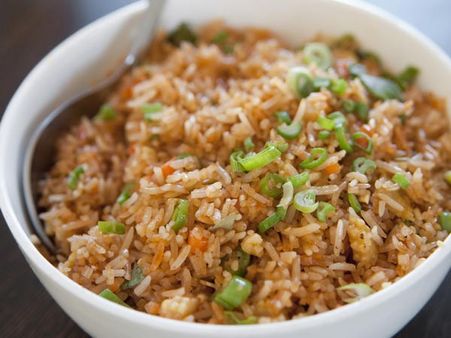
Brown Rice Recipes For Weight Loss
Brown rice pilaf with onions and corn [17]
Ingredients:
•
1
tbsp
olive
oil
•
½
cup
fresh
corn
kernels
•
½
cup
chopped
onion
•
½
cup
brown
rice
•
1
¼
cups
chicken
broth
Method:
•
In
a
small
saucepan
heat
olive
oil.
•
Add
corn
and
onion
and
stir
fry
for
about
five
to
seven
minutes
till
it's
turned
light
brown.
•
Add
brown
rice
and
stir
well.
•
Add
chicken
broth
to
it
and
bring
to
a
boil.
•
Cover
the
pan
and
lower
the
heat.
•
Cook
for
about
45
minutes
till
the
rice
is
tender.
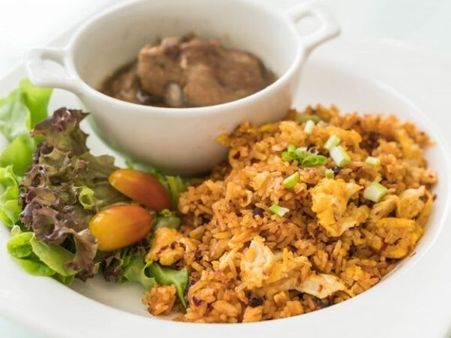
Brown rice salad
Ingredients:
•
200
g
long
grain
brown
rice
•
1
red
pepper
•
1
green
pepper
•
4
spring
onions
chopped
•
2
tomatoes
•
2
tbsp
parsley
chopped
•
2-3
garlic
cloves
chopped
•
½
lemon
•
2
tbsp
olive
oil
•
salt
and
black
pepper
to
taste
Method:
•
First,
wash
and
rinse
the
rice
and
then
cook
the
rice.
•
After
the
rice
is
cooked,
rinse
in
cold
water
and
allow
it
to
cool.
•
Remove
the
seeds
from
the
peppers
and
slice
them
thinly.
•
Cut
tomatoes
into
wedges
and
mix
all
the
prepared
veggies
with
the
cooked
rice.
•
In
a
bowl,
squeeze
the
juice
of
the
lemon
and
mix
it
with
olive
oil,
salt
and
black
pepper.
Add
garlic
to
it
and
mix
well.
•
Pour
this
mixture
onto
the
rice
salad
and
stir
it
gently
[18].
-
 wellnessBrown Rice Vs White Rice: Which Is The Healthier Option?
wellnessBrown Rice Vs White Rice: Which Is The Healthier Option? -
 nutrition12 Foods That Are High In Manganese
nutrition12 Foods That Are High In Manganese -
 nutrition20 Fibre-rich Indian Foods For Weight Loss
nutrition20 Fibre-rich Indian Foods For Weight Loss -
 recipesStir Fry Vegetables In White Garlic Sauce With Burnt Garlic Brown Rice Recipe
recipesStir Fry Vegetables In White Garlic Sauce With Burnt Garlic Brown Rice Recipe -
 recipesBrown Rice Khichdi Recipe | Vegetable Brown Rice Khichdi Recipe
recipesBrown Rice Khichdi Recipe | Vegetable Brown Rice Khichdi Recipe -
 wellnessBrown, White, Wild or Red Rice: Which Rice Is Best For Weight Loss?
wellnessBrown, White, Wild or Red Rice: Which Rice Is Best For Weight Loss? -
 nutritionBenefits Of Foods With Low Glycemic Index
nutritionBenefits Of Foods With Low Glycemic Index -
 diet fitnessPrinciples Of Healthy Eating
diet fitnessPrinciples Of Healthy Eating -
 riceIron Rich Tomato Methi Pulao Recipe
riceIron Rich Tomato Methi Pulao Recipe -
 break fastEasy And Healthy Brown Rice Dosa Breakfast
break fastEasy And Healthy Brown Rice Dosa Breakfast -
 healthDo You Keep A Clove Of Garlic Under Pillow? Not To Keep Vampires At Bay, There May Be Scientific Reasons
healthDo You Keep A Clove Of Garlic Under Pillow? Not To Keep Vampires At Bay, There May Be Scientific Reasons -
 healthGet Your Groove On: 5 Health Benefits Of Dancing To Afro Beats
healthGet Your Groove On: 5 Health Benefits Of Dancing To Afro Beats


 Click it and Unblock the Notifications
Click it and Unblock the Notifications



